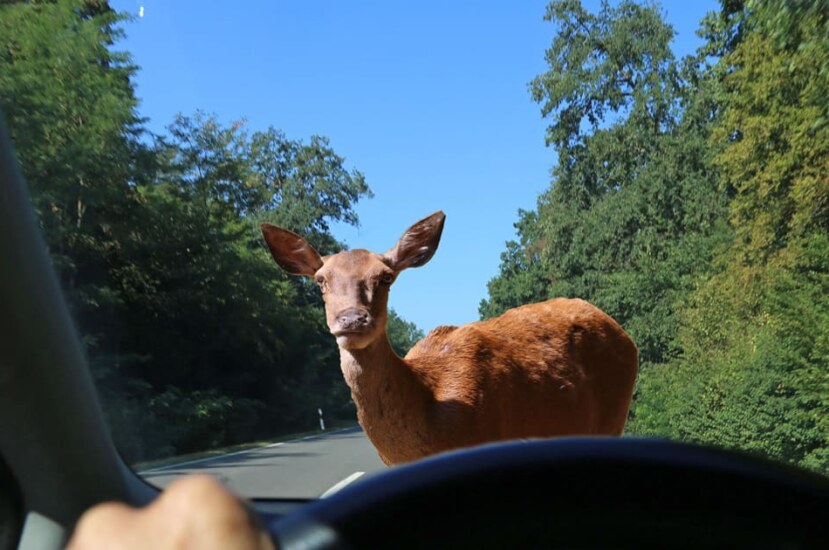As a driver, I am always concerned for the safety of my vehicle when traveling through areas populated with wildlife like deer.
One way to increase safety and prevent collisions with these majestic creatures is by installing deer whistles.
In this article, I’ll offer my expertise on installing deer whistles efficiently so you and any wildlife nearby remain safe while driving.
They are small devices that emit high-frequency sounds that humans can’t hear but are audible to deer and other animals.
They aim to alert animals of approaching vehicles, giving them enough time to move out of the way and avoid potential accidents.
With thousands of deer-related accidents occurring annually, investing in this simple yet effective device could save human and animal lives.
Below I explain the significance of installing deer whistles, their working mechanism, and the various types available on the market.
The importance of installing deer whistles
Installing deer whistles on your vehicle is essential for several reasons:
- It helps prevent accidents involving deer and other animals, which can cause significant property damage, injuries to passengers, and even fatalities. According to the Insurance Institute for Highway Safety, approximately 1.5 million deer-vehicle collisions occur annually in America, resulting in over $1 billion in vehicle damage, thousands of injuries, and hundreds of fatalities.
- Deer whistles offer an environmentally friendly and humane solution to the problem of wildlife collisions. They do not harm animals in any way, making it our duty as responsible drivers to take measures for their protection. By installing them, we can guarantee their safety while contributing to maintaining the balance in our ecosystem.
- Installing them can save you money on insurance premiums and repair expenses. Many insurers offer discounts to drivers who take preventive measures to reduce accident risks, such as installing deer whistles. Furthermore, repair costs after a collision with a deer are usually relatively high, so investing in deer whistles now will save you money in the long run.
How do deer whistles work?
Deer whistles emit high-frequency sounds that are inaudible to humans but audible to deer and other animals.
These alert the animals of an approaching vehicle, giving them enough time to move out of harm’s way and avoid a collision. They are typically mounted on the front of vehicles and activated by air passing through them as the car moves.
Experts debate the effectiveness of deer whistles, with some studies showing positive outcomes and others suggesting they may not be as reliable as claimed.
Regardless, many drivers who have used these safety whistles report a noticeable decrease in wildlife collisions – providing enough anecdotal evidence to back up their use as a preventive measure.
Choosing the proper deer whistle for your vehicle
Selecting the ideal deer whistle for your car can be a daunting task.
Here are some factors to take into account when making your selection:
Type of whistle: Air-activated and electronic are two primary types of deer whistles.
Air-activated whistles are the most popular, powered by air passing through them as the vehicle moves.
Electronic whistles require battery power to emit an electronic sound. Both types have advantages and drawbacks, so research which works best for your requirements.
Frequency range: Different deer whistles emit sounds at various frequency ranges.
To ensure the most effective alerting of deer and other animals, select a whistle with multiple frequencies that emit sounds simultaneously.
Some whistles are even designed to alert a wider variety of creatures.
Quality and durability: The quality and durability of a deer whistle are essential factors to consider when purchasing.
Look for high-quality materials that can withstand harsh weather conditions and those with customer reviews demonstrating their ability to last over time.
Reading customer reviews and ratings is another way to assess the quality and durability of a particular whistle model.
Ease of installation: Look for a deer whistle that is user-friendly and comes with clear instructions.
Some whistles require professional installation, while others can be completed by the vehicle owner.
When considering which option is best for you, choose one that requires no professional setup to save on installation expenses.
Step-by-step guide on how to install deer whistles
Once you’ve picked the ideal deer whistle for your vehicle, it’s time to install it.
The installation process may differ slightly depending on the type and brand of whistle you purchase.
Here is a general step-by-step guide on how to properly mount deer whistles:
Cleaning the installation area: Begin by cleaning the location on your vehicle where you plan to install the whistle, typically the front bumper or grille.
Use a cloth and rubbing alcohol to remove dirt, grease, or debris gently.
Mark the installation spots: Most come in pairs, and installing them on both sides of your vehicle is recommended for optimal effectiveness.
Hold the whistles against the desired installation area and mark where you would like them attached.
Attach the whistles: Depending on the type of deer whistle you select, you may require adhesive, screws, or other mounting hardware to secure them to your vehicle.
Follow the manufacturer’s instructions for secure attachment.
Testing the whistles: Once installed, testing them to guarantee they work correctly is essential.
Drive your vehicle at least 30 mph for air-activated whistles to activate them.
For electronic whistles, turn on the device and listen for sound (you may need a device that can detect high-frequency sounds as some whistles may not be audible to humans).
After installation, inspecting the deer whistles often is essential to ensure they remain operational and undamaged.
Expert tips for effective deer whistle installation
To maximize the efficiency of your deer whistle installation, take into account these expert suggestions:
Install the whistles at the recommended height: Most manufacturers recommend installing them 18-24 inches above the ground, so that sound waves can travel at an appropriate angle and reach animals’ ears.
Avoid installing deer whistles behind obstacles: Make sure to place your deer whistles in a clear and unobstructed area on your vehicle’s front. Obstructions like license plates, lights, or other accessories can block sound waves and reduce effectiveness.
Experts advise using multiple whistles for optimal coverage: To ensure optimal alerting of deer and other animals, some experts suggest using more than two whistles and mounting them at different angles.
Deer whistle maintenance and replacement
Deer whistles require minimal upkeep, but it’s essential to inspect them regularly for any signs of damage or wear.
If the whistle appears damaged or not working correctly, it should be replaced promptly.
Moreover, replacing the device may be necessary if you observe increased wildlife sightings on the road.
Additional measures for safeguarding your vehicle against wildlife collisions
Deer whistles can be an effective preventive measure against wildlife collisions.
Still, there are other steps you can take to safeguard both your vehicle and yourself while driving in areas populated with deer and other animals.
Here are some additional measures you may want to consider:
Reduce your speed: When driving in areas where wildlife is present, slow down and be extra cautious.
Doing this gives you more time to react if an animal suddenly appears in front of your vehicle.
Use high beams at night: High beams can help you spot animals on the road from a greater distance.
However, switch back to low beams when approaching other vehicles to avoid blinding drivers.
Be alert and attentive: Keep your eyes on the road and know your environment. Watch for signs of wildlife, such as tracks, droppings, or grazing areas.
Wear your seatbelt: Wearing your seatbelt can significantly reduce the risk of injuries in case of an accident. Make sure all passengers in your vehicle are also wearing their belts.
final thoughts
Investing in deer whistles for your vehicle is an affordable, effective way to increase safety and prevent wildlife collisions.
By selecting the correct type of whistle, installing it correctly, and following expert tips, you can increase alerting chances between deer and other animals to reduce accidents.
They are just one of the many measures to protect yourself and your vehicle while driving in areas with wildlife. Be extra cautious, reduce speed, use high beams, and wear a seatbelt for added safety to minimize the likelihood of accidents.
If you have any queries or worries regarding deer whistles or vehicle safety, contact a professional or your local wildlife management agency for advice.
Stay safe on the road and safeguard yourself and the wildlife around you.


